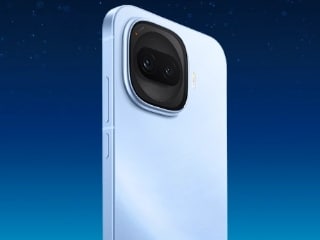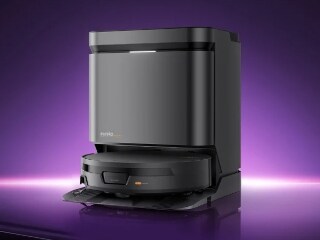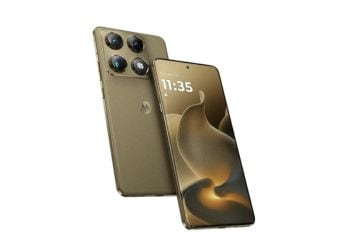- Home
- Mobiles
- Mobiles Features
- Behind the Pixel: Google's First Real Threat to the iPhone
Behind the Pixel: Google's First Real Threat to the iPhone

Google is embarking on a wholesale revamp of its mobile phone strategy, debuting a pair of slick and powerful handsets that for the first time will go head-to-head with Apple's iconic iPhone.
Alphabet's Google on Tuesday unveiled the Pixel and larger Pixel XL, the first phones that were conceptualized, designed, engineered and tested in-house. The Pixel handsets feature a Siri-like virtual assistant, flashy camera features and are the first to boast Android’s new Nougat 7.1 operating system. Their debut signals Google’s push into the $400 billion smartphone hardware business and shows that the company is willing to risk alienating partners like Samsung and LG that sell Android-based phones.
“Google is now the seller of record of this phone,” said Rick Osterloh, chief of the company’s new hardware division. He notes that the company is now managing inventory, building relationships with carriers, sourcing components, making supply chain deals and managing distribution. Google is even making accessories, including cases and cables.
Until now, Google had satisfied itself with dipping a toe into the smartphone hardware business with the six-year-old Nexus program, a co-branding effort that outsourced the vast majority of development to other smartphone makers. While well regarded, Nexus handsets were mostly a way for Google to experiment. But along the way, executives began to see the benefit of the Apple approach: a unified portfolio of consumer electronics products that show off its services better than partners can. A Home speaker device, a virtual reality headset, a Wi-Fi router system and an updated video streaming stick were also unveiled on Tuesday at an event in San Francisco.
Getting into the hardware business is a big, risky financial and operational commitment. But Google needed its own handset to ensure distribution for its web services, and more complex offerings like virtual and augmented reality. So in the summer of 2015, Chief Executive Officer Sundar Pichai approved the Pixel project; development began last fall. “The difference with this device is that we started from the beginning,” says Dave Burke, who runs Android engineering. By contrast, Google’s contributions to Nexus phones typically didn’t happen until they were 90 percent done.
Custom Silicon
When Osterloh, 44, came on board in mid-April, he brought Google’s hardware groups into one division, shuttering projects he didn’t see contributing to Google’s future. Now the engineers and designers from Google Glass, Chromecast and Pixel all work together. Keeping them separate, he says, made it “hard to drive toward the goal of portfolio strategy and focus.” Reflecting long-held ambitions to build an Apple-style supply chain, the hardware division now has a supply-management team, drawing on the expertise of the Nest smart-home unit acquired by Google nearly three years ago.
Google declined to say how much it’s spending on the effort. However, Jason Bremner, a former Qualcomm Inc. executive who works on Google’s hardware products, put it in context. "Part of being the seller of record means that inventory, that supply chain risk -- you know, hundreds of millions of dollars on the line on any given day -- that’s on Google now," he said.
Now that Google is designing phones itself, the company can at long last put together a product roadmap going out several years. For example, last month Burke was able to see a photo taken by a Google handset that won’t debut until next fall. That “would have never happened with Nexus,” he says. Going forward, more and more of the phones’ guts will be developed in-house. Burke says the company will eventually be able to ship its own custom “silicon,” a buzzword for customized processors that make devices work better.
It’s a very different setup from Osterloh’s previous Google gig, when he ran the Motorola division. “While we were part of Google, we were very arm’s-length,” he says. Now his team gets early access to the company’s advances in machine learning and innovations from the Assistant group. The Pixel phones will also be the first to run the next version of Android, Nougat 7.1, complete with Google tie-ins like pro camera effects, instant chat support, and a service that automatically frees up phone storage via the cloud.
Still, Google has deliberately built a firewall between the hardware and Android divisions so other phone makers’ proprietary technology doesn’t leak. Hiroshi Lockheimer, who runs the Android unit and is a longtime Osterloh pal, says his group will treat the hardware team like any customer. “Samsung is a very important partner, as is LG, Huawei and so on,” he says. “Rick is an important partner. Samsung tells us confidential information about their product line, their plans. We won’t tell LG that, and vice versa. That continues. Everyone is treated the same, including Rick’s team.”
Osterloh Show
When Osterloh demonstrated the Pixel phones at Google’s Mountain View, California, headquarters recently, it was immediately clear the craftsmanship is light years ahead of the flimsy $1,500 Google Glass headsets and plastic Chromecast media players of yore. With their metal frames and precisely honed bezels and edges, the Pixels (which come in silver, black and limited-edition blue) have more in common with the elegant gear from Nest.
The phones feature cameras that can snap photos quicker than the blink of an eye, app speeds once reserved for laptops and battery life that bests last year’s non-Google made Nexus phones. Osterloh proudly showed how one can twist the phone mid-air to activate the selfie-camera. “That’s pretty cool,” he says. Also notable is a fingerprint scanner that doubles as a trackpad (other Android phone makers will get to enable this, too) and software-enhanced gyroscopes that reduce shakiness in recorded video, stabilization that Osterloh calls “out of this world good.”
The new phones are made up of off-the-shelf components from several suppliers, including a Snapdragon processor, and are assembled in Taiwan by HTC. But there is still custom work inside this first version, including wireless modem technology that has evolved from earlier experiments with Nexus. The Pixel also has chipsets optimized by Google that makes photo-taking and touchscreen response times much faster than any Android device yet built, Burke says. The Google Assistant was developed separately from Android and offers suggestions based on previous queries. For example, it can list San Francisco landmarks after being asked earlier about the local weather.
While Google has contracted HTC to assemble the Pixel phones, Osterloh says the approach is no different than Apple’s partnership with iPhone builder Foxconn. Flip the Pixel over and you’ll see “Made by Google,” another tip of the hat to Apple, which has long made much of the fact that its phones are “Designed by Apple in California.” Osterloh says Google will never say the Pixel is co-engineered with anyone else. He proudly proclaims, “It’s ours.”
Catch the latest from the Consumer Electronics Show on Gadgets 360, at our CES 2026 hub.
Related Stories
- Samsung Galaxy Unpacked 2025
- ChatGPT
- Redmi Note 14 Pro+
- iPhone 16
- Apple Vision Pro
- Oneplus 12
- OnePlus Nord CE 3 Lite 5G
- iPhone 13
- Xiaomi 14 Pro
- Oppo Find N3
- Tecno Spark Go (2023)
- Realme V30
- Best Phones Under 25000
- Samsung Galaxy S24 Series
- Cryptocurrency
- iQoo 12
- Samsung Galaxy S24 Ultra
- Giottus
- Samsung Galaxy Z Flip 5
- Apple 'Scary Fast'
- Housefull 5
- GoPro Hero 12 Black Review
- Invincible Season 2
- JioGlass
- HD Ready TV
- Laptop Under 50000
- Smartwatch Under 10000
- Latest Mobile Phones
- Compare Phones
- Motorola Signature
- Vivo Y50e 5G
- Vivo Y50s 5G
- Realme 16 Pro+ 5G
- Realme 16 Pro 5G
- TCL Nxtpaper 70 Pro
- OPPO A6 Pro 5G
- Honor Power 2
- Zephyrus Duo 16 (2026)
- Asus ROG Zephyrus G16 (2026)
- Realme Pad 3
- OPPO Pad Air 5
- Xiaomi Watch 5
- Huawei Watch 10th Anniversary Edition
- Acerpure Nitro Z Series 100-inch QLED TV
- Samsung 43 Inch LED Ultra HD (4K) Smart TV (UA43UE81AFULXL)
- Asus ROG Ally
- Nintendo Switch Lite
- Haier 1.6 Ton 5 Star Inverter Split AC (HSU19G-MZAID5BN-INV)
- Haier 1.6 Ton 5 Star Inverter Split AC (HSU19G-MZAIM5BN-INV)



















